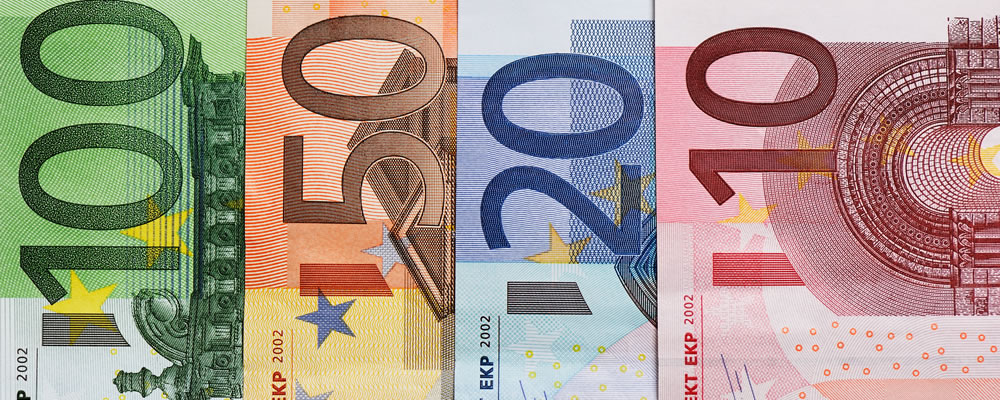- Euro softened after disappointing German Factory Orders – Demand slumped severely in June to dent confidence in Eurozone’s powerhouse economy
- BoE rate easing measures maintained downside pressure on Sterling – Worries over post-Brexit slowdown continued to hamper the Pound
- US Non-Farm Payrolls report significantly bettered forecast – US Dollar trended higher in response to tighter jobs market
- EUR exchange rates predicted to recover ground on stronger German production data – Robust data likely to encourage demand for single currency
An unexpectedly bullish US payrolls report sharply dented the EUR USD exchange rate at the close of last week, with the single currency already under pressure thanks to discouraging German data.
The development helped the Pound steady against the Euro after previously weakening in response to the Bank of England’s (BoE) decision to slash borrowing costs.
Weaker German Factory Orders Dented Euro (EUR) Exchange Rates
Investors were not encouraged on Friday by the latest German Factory Orders data, which rather diminished the conviction that the Eurozone’s powerhouse economy remains in a robust state. Orders were found to have slumped far more sharply than forecast in June to clock in at -3.1% rather than -1.5%, suggesting that demand slowed significantly on the year. Given the importance of exports and industry to the German economy this did not seem to bode overly well for the Euro (EUR), particularly given the bullish turn of the US Dollar (USD) later in the day.
Confidence in the single currency could recover somewhat on Monday, however, if German Industrial Production is found to have recovered in June. Any indications of greater underlying strength in the economy would help to boost the appeal of the Euro, even though doubts remain over the health of the currency union in general. To that end the Eurozone Sentix Investor Confidence Index for August will be of interest to markets, with any weakening in sentiment likely to push the EUR exchange rates lower.
BoE Interest Rate Cut Forecast to Continue Weighing on Pound (GBP) Outlook
Demand for the Pound (GBP) remained decidedly weak in the wake of the Bank of England’s (BoE) decision to cut interest rates to a fresh record low of 0.25% at its August policy meeting. Policymakers ultimately exceeded market easing expectations, unveiling a four-pronged program of monetary loosening that included a fresh round of quantitative easing and the purchase of corporate bonds. While the measures are designed to boost the domestic economy in the aftermath of the Brexit vote concerns remain as to the UK’s economic outlook, with the chances of a further rate cut weighing on Sterling.
The outlook of the Pound looks set to remain biased to the downside for the foreseeable future, with the impact of the BoE’s easing measures not filtering through into economic data for some time to come. Tuesday’s raft of data could offer the ailing currency a rallying point, although the pre-referendum production and trade figures are likely to be eclipsed by the NIESR GDP estimate for July. If the economy is suggested to have slowed significantly in response to Brexit-based uncertainty then the Euro to Pound (EUR GBP) exchange rate is likely to make fresh gains.
Bullish US Payrolls Prompted Sharp EUR USD Exchange Rate Slump
July’s US Non-Farm Payrolls report substantially exceeded expectations ahead of the weekend, with the headline figure printing at 255,000 rather than 180,000. This pointed towards a continued tightening in the domestic jobs market, despite the accompanying Unemployment Rate failing to show the forecast dip to 4.8%. Given the importance that the Federal Open Market Committee (FOMC) has previously placed on employment indicators this bullish result reignited speculation over the possibility of an interest rate hike coming before the end of the year. As analysts from Lloyds Bank noted:
‘It leaves an interest rate hike by the Fed this year a strong possibility. Indeed the initial market response has been to raise the likely probability attached to a Fed hike by year end to 46% form 35% prior to the report. Even with this data, however, the next policy meeting on September 21st may now be seen as too soon to raise rates by the majority on the FOMC. Instead we expect the Fed to next raise interest rates by 0.25% at its December meeting.’
Markets will be looking for further justification for the Fed to consider an imminent move on interest rates, with any stronger US data expected to shore up the ‘Greenback’ further. Even so, it will be a fairly quiet start to the week for the US Dollar with the only data of note the Wholesale Inventories result for June. Forecasts are for the measure to show a modest uptick, which could offer the Euro to US Dollar (EUR USD) exchange rate some support if this undermines confidence in the strength of the world’s largest economy.



